Geology
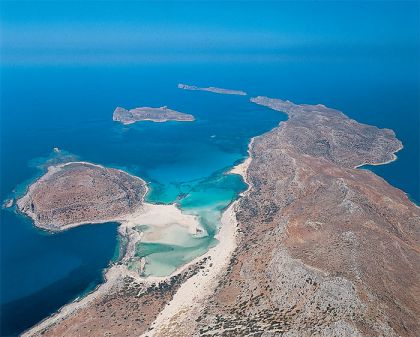
Crete was formed by the movements of the earth's tectonic plates. Simply put, many milions of years ago a huge area of ocean opened up between the Eurasian and African plates. Crete, with most of Greece, was intermittently submerged under the sea. Tha land mass finally rose again as the two plates moved toward each other, producing the Hellenic Island Arc, of which Crete is part.
The shifting of tectonic plates has created faults and gorges and caused the elevation, subsidence and collapse of land. Further tectonic up thrust, earthquakes, weather and erosion have all continued to shape the structure of the island as we see it today.
The mountains dominate the landscape with four massifs, each formed with a limestone core; the White Mountains of the west, Psiloritis in central Crete and the Dikti and Thripti Mountains of the east. Psiloritis peaks at 2456m, with the highest summit of the White Moutains a close second at 2452 m. The Dikti and Thripti mountains reach heights of 2148m and 1476m respectively. These high ranges are linked by smaller mountains and hills, valleys and plains.
Crete has a number of mountain plateaux, the most well known being the high, fertile plain of Lassithi situated at over 850m. There are over 100 gorges on the island, many of them concentrated in the province of Sfakia, including Samaria, at 18km the longest gorge in Europe. Some of the shorter gorges are no less spectacular. It is said that there are over 3000 caves and caverns, many of which are unexplored, while others have been used as sanctuaries in the past, or had sacred gignificance.
More than 50% of Crete is mountainous and the terrain defines the island. Relatively small distance can take hours to transverse. A journey from west to east, a distance of 260km, will take as mush as 6 hours, even with the benefit of a modern, major highway. The terrain has also played a significant part in the islands history overmany centuries of invasion and occupation. Cretan's have used the landscape to clever advantage, exploiting their knowledge of caves, gorges and the high mountains, to the full.
Read Also:
-

TheHotel.gr mitarbeitet mit Best Cars rental, einem professionel, lokalen Autovermieter mit einer großen Auswahle von eleganten und schönen Autos mit guten Preisen und persönlichem Kundenservice. Es gibt Mietwagen in Heraklion Flughafen und in Chania Flughafen.
Mehr...
-
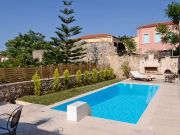
Die Classy Villa ist eine wunderschöne Villa mit drei Schlafzimmern, die in traditionellem Stil gebaut wurde und sich in dem malerischen, ländlichen Dorf Archanes befindet. Archanes liegt 10 Kilometer von der Stadt Heraklion und 13 Kilometer vom Flughafen entfernt. Der Sandstrand Amnissos liegt in circa 14 Kilometer Entfernung.
Mehr...
-

Lygaria Villa is a sea view 2-bedroom villa with a private pool (4*8 meters), lovely panoramic sea views, 500 meters from the sandy beach of Lygaria, 4 km from the town of Agia Pelagia and 20 km west of the city of Heraklion.
Mehr...
-
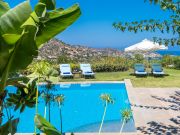
Bali Villas sind zwei freistehende Luxusvillen mit drei Schlafzimmern und privaten Pools mit traumhafter Meersicht stehen, 2 km vom beliebten Badeort Bali entfernt, zu Ihrer Verfügung. Die Villen sind freistehend und über einen gemeinsamen Weg erreichbar.
Mehr...
-
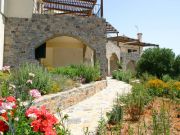
Die Aposperitis Häuser ist ein Komplex von fünf traditionellen Gästehäusern mit einem Schlafzimmer und einem gemeinsamen Schwimmbecken. Die Häuser befinden sich in dem ruhigen Dorf Drosia.
Mehr...
-

Villa Marianna ist eine neue, traditionelle Villa mit drei Schlafzimmern und einem privaten Pool und Jacuzzi, 350 Meter vom Sandstrand entfernt in der malerischen Gegend von Agia Galini. Viele Restaurants, Cafés und Bars, erreichen Sie nach weniger Gehminuten.
Mehr...
-
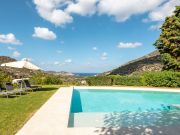
Villa Melissa is a luxury, elegant 3-bedroom villa with a lovely private pool and gorgeous sea views, which is located about 2 km away from the seaside village of Bali and 1700 meters from a wonderful sandy beach. It is located 24 km east of the town of Rethymno, and 43 km west of Heraklion.
Mehr...
-
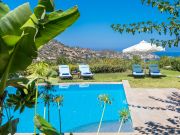
Manolioudis Villas Bali is a small group of two lovely 3-bedroom villas, Melissa and Helios, one next to another. Every Villa has a private pool and it offers lovely sea views! They are located about 2 km away from the famous, seaside village of Bali and 1700 meters from the most beautiful sandy beach.
Mehr...
-
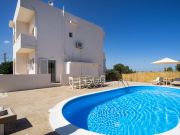
Villa Cacasa ist eine renovierte Villa mit 4 Schlafzimmern und einem privaten Pool, im ruhigen Dorf Choumeri. Die Villa befindet sich 4,5 km von der Stadt Perama, 10 km vom nächsten Sandstrand, und 30 km von der malerischen Stadt Rethymno entfernt.
Mehr...
-

White Villas sind zwei einzigartige Villen mit Meerblick in Agia Pelagia, 1000 Meter von der schonen Sandstrand. Die Villen verfugen uber Infinity privaten Pools und herrlichen Meerblick auf die Buchte von Agia Pelagia.
Mehr...













